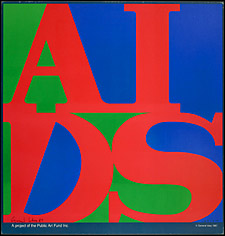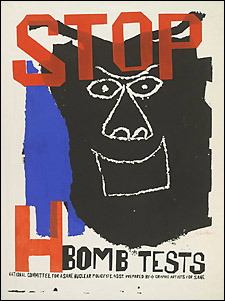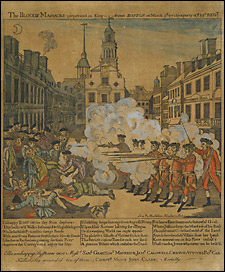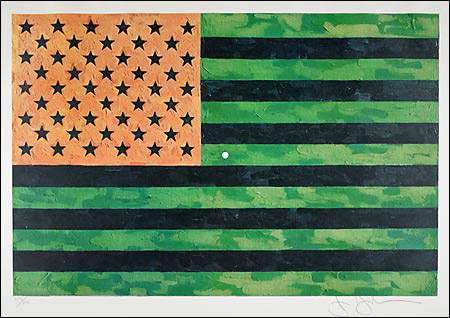At the Fogg, dissenters (old and new) get a chance to rail once more
For a few months at least, the compact Straus Gallery on the ground floor of the Fogg Art Museum will be the heart of protest and dissent at Harvard.
“Dissent!,” on display through Feb. 25, is an exhibition of 62 etchings, posters, prints, T-shirts, and other media. Together, they comprise a kind of pocket history of protest art going back five centuries.
A year ago, during a survey of the Fogg’s 70,000-plus prints, curator Susan Dackerman found a thematic thread running through many of the works: protest against abuses of power, both real and perceived. The exhibit she calls a “democracy of prints” shows how the ardor of social criticism bridges rifts in culture, history, and time.
In all the prints, the mighty take a common hit. The exhibit crosses the centuries to give us satiric depictions of popes as wolves, kings as pears, dictators as monsters, and presidents as freaks.
A 16th century German woodcut, “Pope as a Wolf Enticing the Sheep” (1520), was inspired by the Reformation’s contempt for what its believers saw as a rapacious and materialistic papacy. On a nearby wall is Jonathan Mulliken’s version of a widely reproduced Paul Revere engraving of the 1770 Boston Massacre, whose lurid colors and pathos prefigure the American Revolution.
Across the gallery are two of Picasso’s 1937 “Dream and Lie” etchings, styled after American comic strips. The panels, intended to be cut and sold as postcards at the 1937 World’s Fair in Paris, bitterly depict fascist dictator Francisco Franco as a monstrous cancer that ravages Spain.

Next to them is “Get Your War On,” a 2004 David Rees screen print of comic-like panels that combine banal clip art with improbable conversations between right-wing hipsters. (“Oh my God. This War on Terrorism is gonna rule.”)
Centuries and countries and targets of dissent aside, Dackerman has uncovered a democracy of anger in her democracy of prints.
Anger is a burst of color flowing out of the heads of convicted WorldCom executive Bernard J. Ebbers and his wife, a 2005 inkjet digital print by Fred Tomaselli based on a New York Times front page. “The news makes him so incensed,” said Dackerman of Tomaselli, “the only way he can defuse his anger some days is to draw on these New York Times images, and to manipulate them in some way.”
Lengthy and thorough explanations of context accompany each print. “The works are so much more interesting when they’re looked at in context,” said Dackerman, Carl A. Weyerhaeuser Curator of Prints. Enjoying the exhibit, she said, “does become a matter of knowing history.”

Without the right background, prints that started as protest art “become aestheticized, and their social and political context becomes undervalued,” said Dackerman. So one century’s political art has to be explained to another.
Take the caricatures of Louis Philippe, France’s 19th century “citizen king,” by Charles Philipon and Honoré Daumier. The king, who in 1830 attempted to restrict a free press, became associated with a derisive but oblique symbol: a fat pear. The French lithographs on display illustrate the short shelf life some satiric images have. (But the insult survived in another form. The French word for pear, poire, is still slang for “fathead.”)
Edouard Manet’s 1871 lithograph, “The Barricade,” requires understanding the Paris Commune, an egalitarian shadow government of the working class that was brutally suppressed.
“Dissent!,” the exhibit, does more than revive the arcana of past satires, and the injustices that inspired them. It also celebrates printmaking, a medium that Dackerman said is ideal for promulgating dissent: It is simple, immediate, and cheaply reproducible.

The tools of printmaking are straightforward: plate, paper, ink, and pressure. The type of woodcut used to print the 1520 image of a pope in wolf’s clothing was very common, easy to make, and easy to print with – “the medium for Reformation dissent,” said Dackerman.
In the 19th century, wax-coated lithographic printing stones represented an upgrade in protest printmaking. They allowed skilled draftsmen like Daumier and Manet to draw images directly onto a printing surface.
By the 1960s, screen printing became the leading medium of dissent. In 1969, striking graduate students at Harvard turned out “incredibly simple, yet effective, images” on T-shirts, posters, armbands, and fliers, said Dackerman, who combed the Harvard University archives in Pusey Library for the material. (At the time, Great Space in Robinson Hall became a printmaking workshop for strikers.)
One text-heavy T-shirt, listing reasons to strike, displays the easy mobility a message can have, transforming its wearer into a mobile kiosk advertising dissent.
“The Harvard stuff is very important,” said Dackerman. Students today, she said, need to see that students then used printmaking as a medium of dissent “to great effect.”
In the same period, printmaking was the sometimes political medium of accomplished artists, including Andy Warhol.
In a series of stark 1964 screen prints – one of them on display in “Dissent!” – Warhol used photographic images of police attacking Civil Rights demonstrators in Birmingham, Ala. In 1972, his wry screen print, “Vote McGovern,” employs ghoulish colors to give a smiling image of President Richard Nixon a freakish cast.

“Dissent!” includes other examples from famous artists. Some are commonly associated with protest art (Sister Corita, Ben Shahn, Jasper Johns, Richard Serra). Other artists seem merely to lapse into political moments (Picasso, Manet, Warhol).
“I began looking for the most effective work,” said Dackerman of her survey of political art among the Fogg prints. More often than not, she said, “it was by some of the most celebrated artists.”
Dackerman and a series of visiting social commentators on coming Friday afternoons will transform the “Dissent!” exhibit space into a place of public conversations on protest art, music, and literature.
The sessions will also be recorded, and podcast through the museum Web site – a first.
Said Dackerman of this living classroom: “As a university museum, we have this unique opportunity to use the gallery space pedagogically.”

Scheduled so far for the afternoon discussions on dissent and democracy are Carrie Lambert-Beatty, assistant professor, Visual and Environmental Studies and History of Art and Architecture (3 p.m., Dec. 1); Guthrie P. Ramsey Jr., visiting associate professor of music (3 p.m., Dec. 8); and Tim McCarthy, lecturer in history and literature, adjunct lecturer in public policy, John F. Kennedy School of Government (3:30 p.m., Dec. 15).
For more information, visit http://www.artmuseums.harvard.edu.





